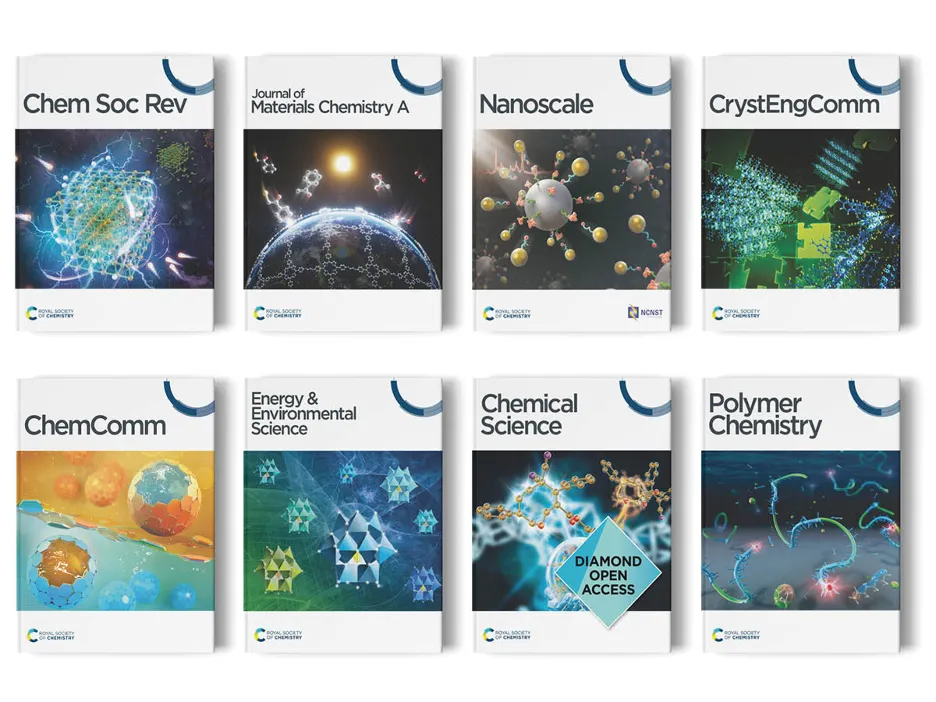Revise or transfer your article
How to revise your article following assessment, manage proofs or accept a transfer offer to another journal.
Following assessment and review, your article might be rejected. This can be for a lot of different reasons, including if the subject makes it better suited to another journal. If this is the case, a transfer might be recommended.
But, following peer review, hopefully your article will be accepted for publication (usually subject to some revisions).
On this page
Revising your article
Revisions are a natural part of the publication process – generally all authors will be asked to make at least a few changes, to make sure that the article is of the highest possible quality.
| Do | Avoid |
|---|---|
|
|
Transferring between our journals
The Royal Society of Chemistry is committed to providing authors with a high level of customer service throughout the publication process. One of the ways we do this is to consider the suitability of a manuscript for another Royal Society of Chemistry journal if the manuscript is unsuitable for publication in the journal to which it was submitted originally.
If a paper is due to be rejected from one Royal Society of Chemistry journal the editorial office may offer the author(s) the option to transfer the paper to one of our other journals for consideration. This offer may occur during the initial assessment of a manuscript or after reports on it have been received from reviewers. As part of the peer review process, the reviewers are asked to comment whether the manuscript would be more appropriate for one of our other journals.
An offer by the editorial office to transfer the manuscript to another journal is made in the decision letter to the corresponding author; the author decides whether or not to take up the offer and then selects the appropriate option provided in the letter. On acceptance of the offer the manuscript is transferred automatically to the new journal without the author needing to supply the submission information again.
The transferred manuscript will appear as a 'draft' in the author’s ‘Author Centre’ in the new journal, and the author will receive an email asking them to finalise the submission. The process provides a quick and easy route for these papers to be considered by another journal.
If the manuscript already has reports from reviewers then the author will be asked to upload the revised files. These files should include a summary of any new work added and a point by point response to the reviewers’ comments. Authors should be aware that the reviewers’ comments are transferred to the editor of the receiving journal together with the manuscript files. On submission to the new journal, the manuscript will then be assessed by an editor as to whether further peer review will be necessary.
Benefits for authors
Transferring manuscripts between our journals has benefits for authors. When transferring to another journal the author does not need to submit the manuscript or provide the accompanying information again. During the initial assessment by the editor, identification of the most suitable journal for the manuscript optimises the evaluation process. If reports have already been received then further review may not be necessary after a transfer, at the discretion of the editor on the journal to which the manuscript has been transferred. A decision by the new journal about suitability of the manuscript for publication should be made more swiftly.
The transfer process also reduces the burden on reviewers. A paper that has been rejected may be submitted by the author to another journal where it would undergo evaluation again. By transferring between journals here we would be able to consider the reports received already, although some additional review may be necessary. Full peer review is not always necessary thereby reducing the number of reviews required and allowing a decision to be reached more quickly.
Proof Central
Authors of articles accepted for publication will receive their proofs through Proof Central, a user-friendly interface to help authors manage their proofs and corrections. Proof Central allows authors to carry out the following:
- Apply corrections directly to the text of the HTML version of their article
- Directly edit table contents and footnotes
- Provide instructions on any corrections required to figures, schemes, MathType equations and table formats
- Upload revised figures and schemes with comments
- View and answer the editor’s queries in context
- Download a PDF version of the proof
- Download a summary of all the corrections made or requested
- Save progress and return later to complete their corrections
The corresponding author will receive a link to access the proof; they are strongly encouraged to share the proof with their co-authors using the "Invite Collaborators" feature in Proof Central. This gives each author a unique link so their changes are tracked, and with our new concurrent editing feature all authors can work on corrections at the same time. The corresponding author can review and approve all changes before submitting the final corrections.
Alternatively, if authors prefer to supply proof corrections by annotating the PDF, this can also be done through Proof Central and an editor will apply the corrections on their behalf.
There is a full guide on how to use Proof Central available via the help button in the top right-hand corner of the interface. After submitting corrections, it will not be possible to re-access the system to make any further changes.
Related pages

Our journals
We publish over 50 world-leading journals that span the core chemical sciences and related fields.

Publish an article
From finding the right journal to maximising the impact of your work, we're with you every step of the way.

Publish open access
Choosing to publish open access is easy and straightforward – and it is possible in every Royal Society of Chemistry journal.